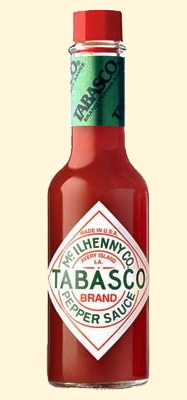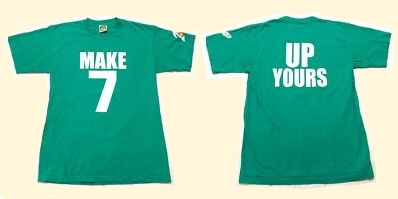


Ricard
Paul Ricard was a travelling salesman, peddling pub articles to cafés all over France in the 30s. At this period, anis-based drinks were prohibited in France. By his intimate and professional knowledge of all things to do with liquor, Paul Ricard realized that one day this prohibition would end one way or the other. So it became his hobby to experiment with all kinds of ingredients to get the perfect Anis drink together for the time anis would be allowed back into the drinking business. In 1938, the law against anis drinks was softened and Paul Ricard finally and proudly presented the result of his research, a fine concoction of herbs, spices, nuts and anis. Now, pastis was Marseille slang for anis drinks mixed with water. Pastis comes from the Italian "pasticcio", which means trouble, as in troubled water. When one mixes anis with four measures of water, the result is a opaque drink, a troubled water. Hence the name pastis. Paul Ricard was the first ready for the new market when the anti-anis law was abolished and he commercialized his product with the slogan: "Ricard, the true pastis from Marseille!". Before long, Ricard had become one of the marketleaders.
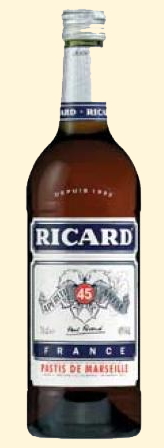
Saint-Raphaël
Adémar Juppert, born and living in Lyon, and not in Saint-Raphaël on the French coast, had one ambition in life, to create a tonic quinine-based wine. He worked such hard hours late at night that he developped eye-sight trouble. His trouble worsening, he promised that if his eye-sight recovered, he would devote his wine to the archangel Raphaël, who according to the Bible had saved Saint Tobias' eyes. In 1830, Mr Juppert recovered from his illness and at the same time found the perfect recipe for his apéritif, which he named of course Saint Raphaël Quinquina. In 1890, his son Pierre deposited the trademark. In 1911, the company moved to a new factory in the Marais. In the early days, the label showed the archangel, who also fronted the company's housefront, but since in the meantime, the company had developped a variation of the first recipe, the design was replaced in 1910 by two waiters, one white, the other red, to symbolize the two varieties. Saint-Raphaël is a success to this day.
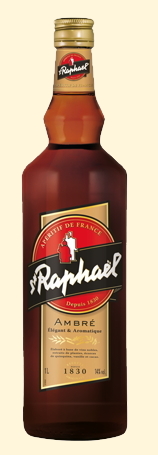
Schweppes
Schweppes is the oldest softdrink in history. Johann Jakob Schweppe was a German who owned a jewellry store in Geneva, but he had a private obsession, to put bubbles into water. In other words, he wanted to invent alcohol- and colorfree champagne. It took him nearly twenty years, but in 1783, he finally succeeded. His water was sparkling. He sold his first bottles in Switzerland, but having realized that the demand for his pet product was greater in England, he moved there. What decided him was that at the time, the English drank a lot of brandy and soda, so his idea was to corner the market on "brandy additives". Thus, in 1835, was born Schweppe's bubbling water, Schweppes. Later, Mr Schweppe had an even greater idea. The English had colonized quite a large part of the world, and in some of these regions, the English troops caught malaria. The medicine to take was quinine, but it wasn't the nicest thing to swallow. So Schweppe set up to combine medication and commercial sense. Most of the malaria problems occurred in India. Schweppe concocted a new drink which he called Schweppes Indian Tonic. He added quinina, oranges and sugar to his water and the English troops loved it. It established Schweppes' popularity to this day.
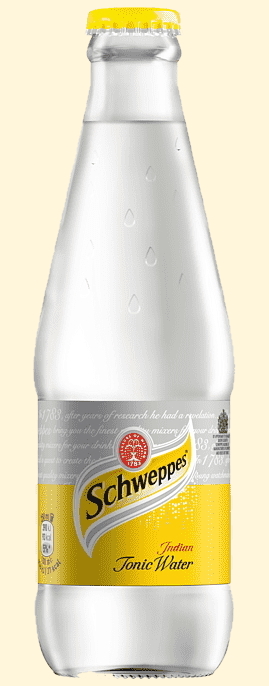
Seven-Up
This series is called "how did drinks get their name?". Logically, Seven-Up should then not figure here, since nobody knows how the name came to be. Fact is that it was a certain Mr Griggs who created this drink as a general store owner in Prices Branch, Missouri. In the early 1920s, he was producing and selling an orange juice "Howdy Grange". In the late 20s, he made a new drink which he called, get ready for this, "The big label Lithiated Lemon Lime Soda". Well, you guessed, sales weren't exactly great. So Mr Griggs decided to shorten the name and he came with "Seven Up", but he never explained how he came to this. Some say it's because the former name was made of seven words and he wanted to symbolize that those words' time was up. Others thought that he may have been an adept of the card-game "seven up" and where the trump card is defined by the top stack card. Nobody knows, but Mr Griggs' trump drink is still big in the game today. (And if you ever find out where the name comes really from, let us know.)
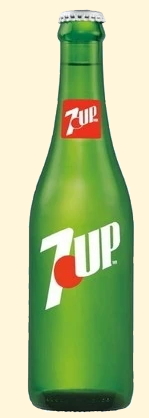
And, er, look at this official 7-Up picture: if you were head of the company, would you agree to an ad that says:
MAKE 7
UP YOURS
Smirnoff
Peter Smirnoff was such a good businessman that he had been appointed personal advisor to czar Alexander II in 1888. Chance would have it that one of Smirnoff's ventures was a distillery that he had built two years earlier not far from the Kremlin. As a distiller and a personal acquaintance of the czar, it wasn't before long that Smirnoff became the official purveyor of vodka to the Russian imperial court. And vodka has been popular with the Kremlin masters ever since. Smirnoff may still rule a solid portion of the world today for all we know.
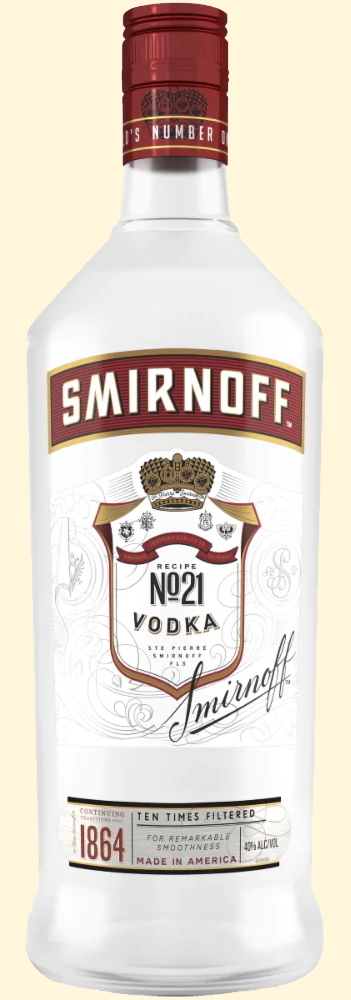
Stella Artois
This beer should figure under Artois, but as it's better known as Stella Artois, we've put it here. The earliest record of this beer dates from the 13th century. Artois was brewed in Louvain near Bruxelles since 1330, as evidenced by the city's tax books on the "Den Hoorn" pub and brewery. In 1708, this commerce was bought by Jean Baptiste Artois whose family then sold the brewery in 1821 to a local brewer who kept the Artois name. Aside from the Artois beer, the brewery decided in 1926 to make a special Christmas beer. Since the Christmas star is a known symbol of the year-end festivities, this Christmas special was named "Stella". This beer and its name became so popular that the brewery is known as Stella Artois since.
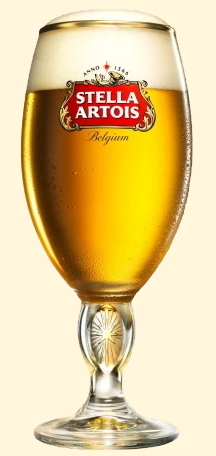
Southern Comfort
Southern Comfort is not so much a whisky as a liquor. It was created in New Orleans in the 1880s. At that time, all along the Mississipi, whisky and other strong liquor was sold mostly straight from the barrel and the quality was not always the best. The connaisseurs imported their own strong liquor and many pubs developed their own brand to have a minimum guarantee of quality. One of the barmen who learned the secrets of the trade was M.W. Heron. After much fiddling around, he too created his own liquor, soon known for its full-bodied, rich in colour, strong, yet deliciously sweet taste. In short, everything a Southern gentleman wanted for his comfort. By 1889 Heron moved to Memphis, where he opened a famous bar near Beale Street, the street later to become famous for the St Memphis blues. In the early 1890s, Southern Comfort did so well that Heron started bottling it to satisfy customers all along the big river. In 1902, Heron moved again, this time to St. Louis. When prohibition ended in 1934, Heron's product was still well known and his Southern Comfort Corporation began selling all over the continent, as it does to this day.
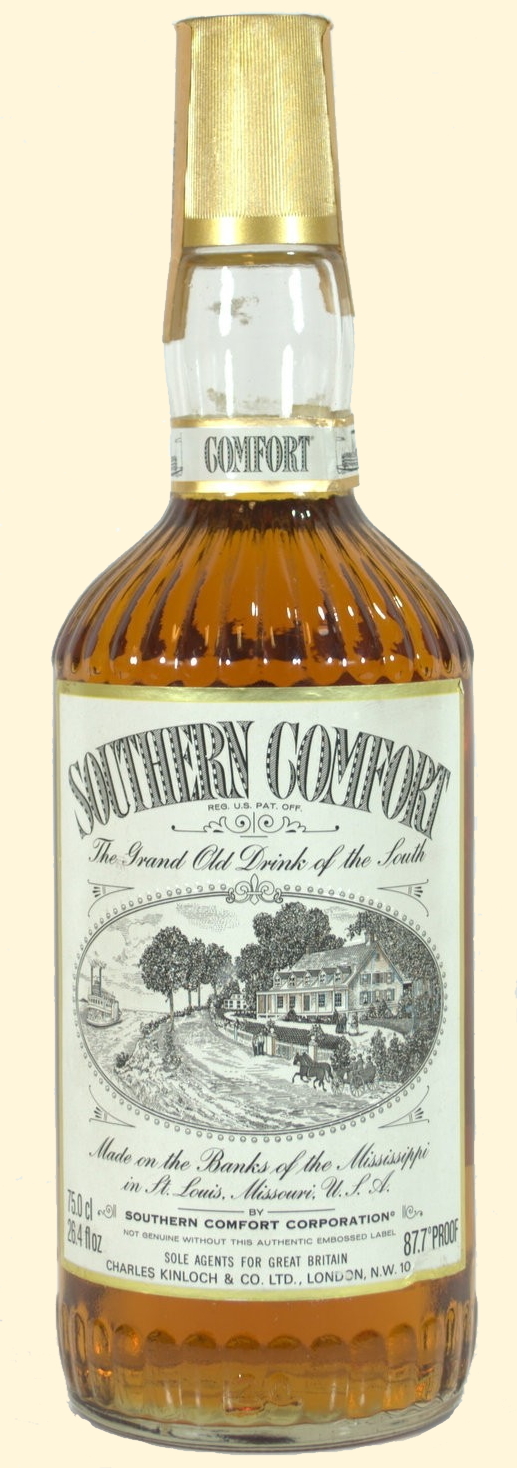
Suntory
Alright, what the biggest selling whisky in the world? Nope, you're wrong, it's Suntory, Japan's top selling whisky. And yet, it's neither a scotch nor a brandy nor a bourbon, it's pure Japanese whisky, an alcohol made by the same process as any classical whisky. At the start of the century, saké was Japan's favourite strong drink. But sailors brought whisky into the country, the drink became popular within a few years and the national distillers soon decided to distill their own. In 1929, Kotobukya distillers came out with their own brand, but they didn't have a proper name for it. So Kotobukya ran a consumers' game to find the perfect name and finally selected "Suntory" because it was easy to pronounce in Japanese, yet sounded completely scottish, at least to Japanese ears. Suntory is still today the whisky of Japanese top managers.
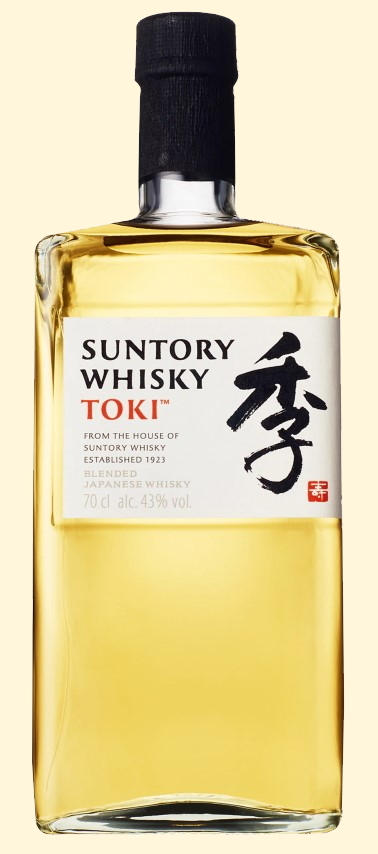
Suze
In the late 1800s, great aperitifs were abundant. Fernand Moureaux and Henri Porte, who had bought an old distillery, figured the market needed a "different" aperitif. Practically all aperitifs were based on sweet wine, herbs and a number of organic additives. The friends wanted to combine the sweetness of the aperitif wines with the sourness of the Enzian. Enzian in German, gentiane in French. Enzian in English? The Enzian grows in the mountains and had always been dug out to make a stomach bitter of reputed effect. In the end, so much Enzian was dug out of the Alps that the plant is now absolutely protected. I guess today's Suze makers are growing their own Enzian somewhere. Anyway, at the time when the concoction was deemed ready for testing, the family got together and had a few. Especially Susanne, whom everybody called Suze, loved it. So they named the aperitif after her.
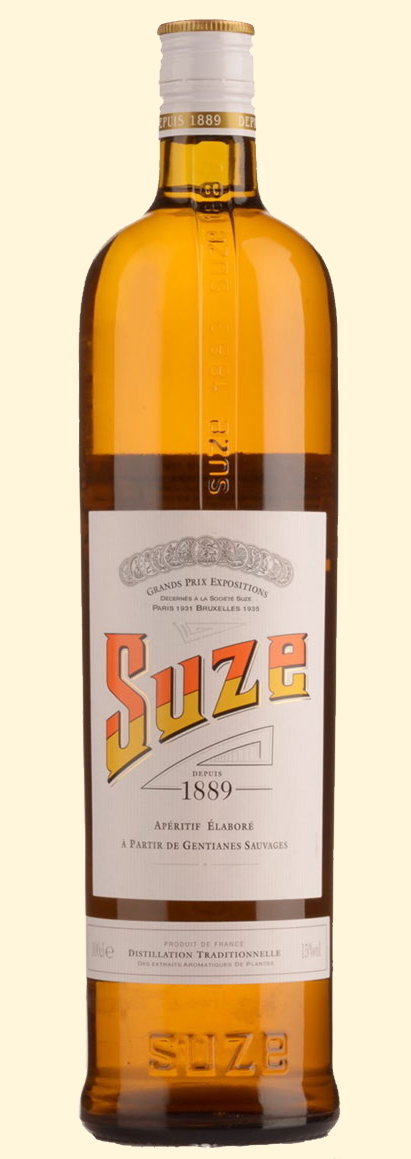
Tabasco
I know it's not a drink, but there are a good many hangover cures that need Tabasco to work. And since it's liquid, might as well consider it simply a drink of its own that just needs a lot of "watering" down before it's in "drinkable" state. Edmund McIlhenny was a retired Louisiana banker who liked his sauces hot so he created his own in 1868. Its recipe was simple, it was made of peppers, salt, and vinegar. Mr McIlhenny named his sauce after the South Mexican State where the main ingredient, tophot red peppers, came from.










